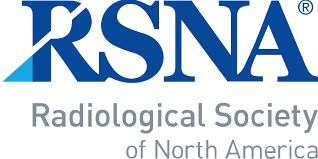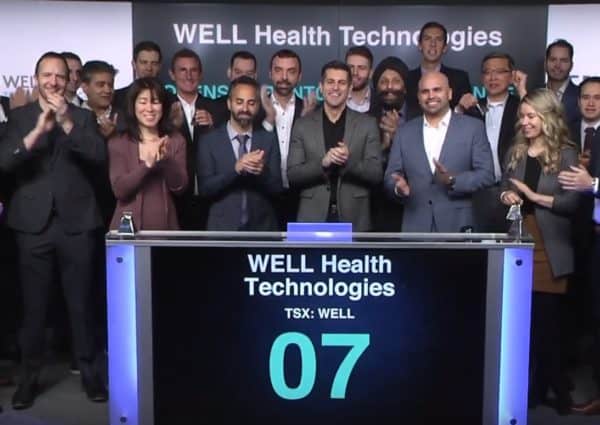COVID-19
See the following -
Pandemics Are the Mother of Invention
 Many believe that the Allies won WWII in large part because of how industry in the U.S. geared up to produce fantastic amounts of weapons and other war materials. It took some time for businesses to retool and get production lines flowing, during which the Axis powers made frightening advances, but once they did it was only a matter of time until the Allies would prevail. Similarly, COVID-19 is making scary inroads around the world, while businesses are still gearing up to produce the number of ventilators, personal protective equipment (PPE), tests, and other badly needed supplies. COVID-19 is currently outnumbering these efforts, but eventually we'll get the necessary equipment in the needed amounts. Eventually. What intrigues me, though, is how people are innovating, inventing new solutions to the shortages we face. I want to highlight a few of these:
Many believe that the Allies won WWII in large part because of how industry in the U.S. geared up to produce fantastic amounts of weapons and other war materials. It took some time for businesses to retool and get production lines flowing, during which the Axis powers made frightening advances, but once they did it was only a matter of time until the Allies would prevail. Similarly, COVID-19 is making scary inroads around the world, while businesses are still gearing up to produce the number of ventilators, personal protective equipment (PPE), tests, and other badly needed supplies. COVID-19 is currently outnumbering these efforts, but eventually we'll get the necessary equipment in the needed amounts. Eventually. What intrigues me, though, is how people are innovating, inventing new solutions to the shortages we face. I want to highlight a few of these:
- Login to post comments
Radiology Initiatives Illustrate Uses for Open Data and Open AI research
 Fans of data in health care often speculate about what clinicians and researchers could achieve by reducing friction in data sharing. What if we had easy access to group repositories, expert annotations and labels, robust and consistent metadata, and standards without inconsistencies? Since 2017, the Radiological Society of North America (RSNA) has been displaying a model for such data sharing. That year marked RSNA's first AI challenge. RSNA has worked since then to make the AI challenge an increasingly international collaboration. Organizers of each challenge curate and annotate medical imaging studies and ask the research community to come up with models to answer important questions.
Fans of data in health care often speculate about what clinicians and researchers could achieve by reducing friction in data sharing. What if we had easy access to group repositories, expert annotations and labels, robust and consistent metadata, and standards without inconsistencies? Since 2017, the Radiological Society of North America (RSNA) has been displaying a model for such data sharing. That year marked RSNA's first AI challenge. RSNA has worked since then to make the AI challenge an increasingly international collaboration. Organizers of each challenge curate and annotate medical imaging studies and ask the research community to come up with models to answer important questions.
- Login to post comments
Resilience must be Blind to the Catalyst - Part I
 On October 29 William Stemper, Forbes Councils Member put forth a thoughtful piece titled Three Steps To Building Resilience Through Technology.The article goes a long ways towards solidifying why resilience has a more urgent place in our businesses. I commend the article to the readers of this post. While Mr. Stemper focuses primarily on technology at his job at Comcast, he tees up some further, more holistic insights. Read More »
On October 29 William Stemper, Forbes Councils Member put forth a thoughtful piece titled Three Steps To Building Resilience Through Technology.The article goes a long ways towards solidifying why resilience has a more urgent place in our businesses. I commend the article to the readers of this post. While Mr. Stemper focuses primarily on technology at his job at Comcast, he tees up some further, more holistic insights. Read More »
- Login to post comments
RSNA Building an Open Repository of COVID-19 Imaging Data
 The medical imaging community around the world is uniting to help address the COVID-19 pandemic. The Radiological Society of North America (RSNA) continues to build on its extensive body of COVID-19 research and education resources, announcing a new initiative to build a COVID-19 Imaging Data Repository. The open data repository will compile images and correlative data from institutions, practices and societies around the world to create a comprehensive source for COVID-19 research and education efforts. The image hosting, annotation and analysis framework will enable researchers to understand epidemiological trends and to generate new AI algorithms to assist with COVID-19 disease detection, differentiation from other pneumonias and quantification of lung involvement on CT for prognosis or therapy planning.
The medical imaging community around the world is uniting to help address the COVID-19 pandemic. The Radiological Society of North America (RSNA) continues to build on its extensive body of COVID-19 research and education resources, announcing a new initiative to build a COVID-19 Imaging Data Repository. The open data repository will compile images and correlative data from institutions, practices and societies around the world to create a comprehensive source for COVID-19 research and education efforts. The image hosting, annotation and analysis framework will enable researchers to understand epidemiological trends and to generate new AI algorithms to assist with COVID-19 disease detection, differentiation from other pneumonias and quantification of lung involvement on CT for prognosis or therapy planning.
- Login to post comments
RSNA Launches International COVID-19 Open Radiology Database
 The Radiological Society of North America (RSNA) and the RSNA COVID-19 AI Task Force today announced the launch of the RSNA International COVID-19 Open Radiology Database (RICORD). RICORD is envisioned as the largest open database of anonymized COVID-19 medical images in the world. More than 200 institutions around the world have expressed their interest in participating. The database will include supporting clinical information and expert annotations. It will be freely available to the global research and education communities.
The Radiological Society of North America (RSNA) and the RSNA COVID-19 AI Task Force today announced the launch of the RSNA International COVID-19 Open Radiology Database (RICORD). RICORD is envisioned as the largest open database of anonymized COVID-19 medical images in the world. More than 200 institutions around the world have expressed their interest in participating. The database will include supporting clinical information and expert annotations. It will be freely available to the global research and education communities.
- Login to post comments
Telework Challenges in a Mobile Device World Facing a Pandemic
 The coronavirus pandemic is affecting all walks of life. Hospitals and medical professionals are on high alert. Schools are closing. Professional sports teams are playing in empty stadiums and, in some cases, not at all. Companies and governments are reviewing how to reduce health risks while maintaining productivity. An obvious response is to expand their telework programs for employees. Telework or remote worker programs have their challenges, and the concern is genuine for the federal government. There is the need to re-work policies, stretch budgets, deal with security concerns, and a big part of the challenge is the changing workforce as smartphones – rather than PCs and landlines of yesteryear – are the tools of choice.
The coronavirus pandemic is affecting all walks of life. Hospitals and medical professionals are on high alert. Schools are closing. Professional sports teams are playing in empty stadiums and, in some cases, not at all. Companies and governments are reviewing how to reduce health risks while maintaining productivity. An obvious response is to expand their telework programs for employees. Telework or remote worker programs have their challenges, and the concern is genuine for the federal government. There is the need to re-work policies, stretch budgets, deal with security concerns, and a big part of the challenge is the changing workforce as smartphones – rather than PCs and landlines of yesteryear – are the tools of choice.
- Login to post comments
The Need for Speed - It's Time to Act!
 As a society we also need to get moving on the population level as well - and the sooner the better! In his fascinating genomic epidemiology detective work Trevor Bedford conducted based on the COVID-19 research he and his team had done in the Bedford lab in Seattle WA, he concluded that the narrow testing that was done in the Seattle area in the early days of the Coronavirus spread allowed the virus to spread faster. In contrast, the Coronavirus testing-blitz in South Korea appears to keep the death rate lower than it could be. It's time to test! The FDA gave high-tech labs the green light to operate tests before receiving any agency review or authorization and both Quest Diagnostics and LabCorp already announced that they have test in the market. But according to CDC, as of March 8 there were only 1,707 tests performed in the US vs. 189,236 in South Korea.
As a society we also need to get moving on the population level as well - and the sooner the better! In his fascinating genomic epidemiology detective work Trevor Bedford conducted based on the COVID-19 research he and his team had done in the Bedford lab in Seattle WA, he concluded that the narrow testing that was done in the Seattle area in the early days of the Coronavirus spread allowed the virus to spread faster. In contrast, the Coronavirus testing-blitz in South Korea appears to keep the death rate lower than it could be. It's time to test! The FDA gave high-tech labs the green light to operate tests before receiving any agency review or authorization and both Quest Diagnostics and LabCorp already announced that they have test in the market. But according to CDC, as of March 8 there were only 1,707 tests performed in the US vs. 189,236 in South Korea.
- Login to post comments
The Ransomware Attacks on Hospitals Are (Cyber) Criminal
 One of the redeeming aspects of crises is that, amidst all the confusion, suffering, and loss, there are usually moments of grace, of humans showing their best nature... Unfortunately, crises also tend to bring out the worst of our natures... And then there are the cyberattacks. Last week the federal Cybersecurity & Infrastructure Security Agency, the FBI, and HHS issued a joint alert Ransomware Activity Targeting the Healthcare and Public Health Sector, warning that they have "credible information of an increased and imminent cybercrime threat to U.S. hospitals and healthcare providers." I'll spare you the technical details of the expected attack strategies or suggested mitigation efforts, but I will note that they warned: "CISA, FBI, and HHS do not recommend paying ransom." Read More »
One of the redeeming aspects of crises is that, amidst all the confusion, suffering, and loss, there are usually moments of grace, of humans showing their best nature... Unfortunately, crises also tend to bring out the worst of our natures... And then there are the cyberattacks. Last week the federal Cybersecurity & Infrastructure Security Agency, the FBI, and HHS issued a joint alert Ransomware Activity Targeting the Healthcare and Public Health Sector, warning that they have "credible information of an increased and imminent cybercrime threat to U.S. hospitals and healthcare providers." I'll spare you the technical details of the expected attack strategies or suggested mitigation efforts, but I will note that they warned: "CISA, FBI, and HHS do not recommend paying ransom." Read More »
- Login to post comments
The Strengths and Weaknesses of the HL7 FHIR Messaging Standard
 It has been several years since we reviewed the progress of the HL7 FHIR standards adoption rate. Health Level Seven's (HL7) Fast Healthcare Interoperability Resources (FHIR) is an emerging standard that has rapidly captured the mind-share of the Health Information Technology (HIT) standards community. FHIR is a standard that enables healthcare data sharing between systems in a manner that is more easily implemented and more expressive than previous HL7 standards such as HL7 Version 2, 3 and Clinical Document Architecture (CDA). Regardless of the version of HL7 standard used, the purpose of these standards is to send clinical data in messages, whether to a party inside or outside your organization. HL7 devises flexible message formats so the receiver of the message can open it up, know who sent it and why, and break it down into understandable segments and data fields.
It has been several years since we reviewed the progress of the HL7 FHIR standards adoption rate. Health Level Seven's (HL7) Fast Healthcare Interoperability Resources (FHIR) is an emerging standard that has rapidly captured the mind-share of the Health Information Technology (HIT) standards community. FHIR is a standard that enables healthcare data sharing between systems in a manner that is more easily implemented and more expressive than previous HL7 standards such as HL7 Version 2, 3 and Clinical Document Architecture (CDA). Regardless of the version of HL7 standard used, the purpose of these standards is to send clinical data in messages, whether to a party inside or outside your organization. HL7 devises flexible message formats so the receiver of the message can open it up, know who sent it and why, and break it down into understandable segments and data fields.
- Login to post comments
Two New Federal Reports Released That Have Major Public Health Impacts
 Two new Federal reports were recently released that have a public health impact. First, the Office of the National Coordinator for Health Information Technology (ONC) released its 2022 Report to Congress: Update on Access, Exchange, and Use of Electronic Health Information. This report covers the current state of adoption of health information technology and access to electronic health information guided largely by the requirements of the 2016 21st Century Cures Act. The report observes that, “Although tremendous progress has been made with EHRs that capture and support the use of health information about individuals, the COVID-19 pandemic exposed gaps in health IT systems that support capturing and using population data. The challenges exposed during the public health response to the COVID-19 pandemic pinpointed the importance of health IT to monitor population health regarding public health surveillance of testing, diagnosis, and vaccine distribution.”
Two new Federal reports were recently released that have a public health impact. First, the Office of the National Coordinator for Health Information Technology (ONC) released its 2022 Report to Congress: Update on Access, Exchange, and Use of Electronic Health Information. This report covers the current state of adoption of health information technology and access to electronic health information guided largely by the requirements of the 2016 21st Century Cures Act. The report observes that, “Although tremendous progress has been made with EHRs that capture and support the use of health information about individuals, the COVID-19 pandemic exposed gaps in health IT systems that support capturing and using population data. The challenges exposed during the public health response to the COVID-19 pandemic pinpointed the importance of health IT to monitor population health regarding public health surveillance of testing, diagnosis, and vaccine distribution.”
- Login to post comments
University of Chicago Awarded $20 Million To Host COVID-19 Medical Imaging Center
 A new center hosted at the University of Chicago-co-led by the largest medical imaging professional organizations in the country-will help tackle the ongoing COVID-19 pandemic by curating a massive database of medical images to help better understand and treat the disease. Led by Prof. Maryellen Giger of UChicago Medicine, the Medical Imaging and Data Resource Center (MIDRC) will create an open-source database with medical images from thousands of COVID-19 patients. The center will be funded by a two-year, $20 million contract from the National Institute of Biomedical Imaging and Bioengineering at the National Institutes of Health (NIH).
A new center hosted at the University of Chicago-co-led by the largest medical imaging professional organizations in the country-will help tackle the ongoing COVID-19 pandemic by curating a massive database of medical images to help better understand and treat the disease. Led by Prof. Maryellen Giger of UChicago Medicine, the Medical Imaging and Data Resource Center (MIDRC) will create an open-source database with medical images from thousands of COVID-19 patients. The center will be funded by a two-year, $20 million contract from the National Institute of Biomedical Imaging and Bioengineering at the National Institutes of Health (NIH).
- Login to post comments
US Senate Releases Draft Future Pandemic Preparedness Plan - Asks for Feedback
 On June 10, 2020 the US Senate released a white paper titled "Preparing for the Next Pandemic" under the signature of Senator Lamar Alexander of Tennessee. The white paper has five recommendations to address future pandemics based on lessons learned from COVID-19 and the past 20 years of pandemic planning. "The five recommendations...along with a series of questions at the end of this white paper, are intended to elicit recommendations that Congress can consider and act on this year," Senator Alexander said in a statement, adding that "I am inviting comments, responses, and any additional recommendations for the Senate Committee on Health, Education, Labor and Pensions to consider. This feedback will be shared with my colleagues, both Democrat and Republican." This feedback from the public will be accepted until June 26, 2020... Read More »
On June 10, 2020 the US Senate released a white paper titled "Preparing for the Next Pandemic" under the signature of Senator Lamar Alexander of Tennessee. The white paper has five recommendations to address future pandemics based on lessons learned from COVID-19 and the past 20 years of pandemic planning. "The five recommendations...along with a series of questions at the end of this white paper, are intended to elicit recommendations that Congress can consider and act on this year," Senator Alexander said in a statement, adding that "I am inviting comments, responses, and any additional recommendations for the Senate Committee on Health, Education, Labor and Pensions to consider. This feedback will be shared with my colleagues, both Democrat and Republican." This feedback from the public will be accepted until June 26, 2020... Read More »
- Login to post comments
WELL Health Announces Flu Surveillance Partnership with McMaster University and the Public Health Agency of Canada
 WELL Health Technologies Corp...is pleased to announce it has partnered with McMaster University ("McMaster") and the Public Health Agency of Canada ("PHAC") to introduce the digitization of the sentinel surveillance program of FluWatch, a program administered by PHAC to monitor the spread of the flu and other flu-like illnesses in the community. The FluWatch surveillance system has been in place for over two decades; however, the new "Flu Automated Surveillance Tool" or "FAST" facilitates real-time surveillance of patients presenting flu-like symptoms and automated reporting of results to PHAC to enable better assessment and decision-making, resulting in more timely results and better health outcomes for all. FAST was developed by McMaster's Department of Family Medicine, and has been clinically proven as effective in capturing an accurate picture of the actual incidence of flu in a surveillance region.
WELL Health Technologies Corp...is pleased to announce it has partnered with McMaster University ("McMaster") and the Public Health Agency of Canada ("PHAC") to introduce the digitization of the sentinel surveillance program of FluWatch, a program administered by PHAC to monitor the spread of the flu and other flu-like illnesses in the community. The FluWatch surveillance system has been in place for over two decades; however, the new "Flu Automated Surveillance Tool" or "FAST" facilitates real-time surveillance of patients presenting flu-like symptoms and automated reporting of results to PHAC to enable better assessment and decision-making, resulting in more timely results and better health outcomes for all. FAST was developed by McMaster's Department of Family Medicine, and has been clinically proven as effective in capturing an accurate picture of the actual incidence of flu in a surveillance region.
- Login to post comments
WELL Health Technologies Becomes World’s First Billion-dollar Open Source EMR Company
 Canadian start-up company WELL Health Technologies (WELL) just crossed the threshold a month ago to become the world’s first billion-dollar open source electronic medical records (EMR) company. WELL, based in Vancouver, British Columbia, has accomplished this milestone less than three years after its founding. WELL’s market cap is currently hovering between $1.2 and $1.3 billion. The company has developed a disruptive digital health platform model with an open source EMR core, and a firm focus on improving clinical outcomes by using the technology to assist physicians and patients focus on health and wellness. Its goal is to shift the industry from a highly fragmented and expensive sick-care system to a health care system.
Canadian start-up company WELL Health Technologies (WELL) just crossed the threshold a month ago to become the world’s first billion-dollar open source electronic medical records (EMR) company. WELL, based in Vancouver, British Columbia, has accomplished this milestone less than three years after its founding. WELL’s market cap is currently hovering between $1.2 and $1.3 billion. The company has developed a disruptive digital health platform model with an open source EMR core, and a firm focus on improving clinical outcomes by using the technology to assist physicians and patients focus on health and wellness. Its goal is to shift the industry from a highly fragmented and expensive sick-care system to a health care system.
- The Future Is Open
- Login to post comments
What Can We Learn from a Big Boat Stuck in a Canal?
 ...The answer to addressing the problem of thinned out supply chains is to recognize that hyper-efficient globalization inherently carries the downside of unpredictable shortages, geopolitical tension, and supply disruptions. And then redesign our global trading order to make it less efficient and more resilient. There are three basic changes we'll need. First, we need to restore anti-monopoly rules, such as antitrust, to prevent the consolidation of production and distribution in the first place. Second, we should re-impose friction, like tariffs, in global trading so that we relocalize production. Trade is generally a good thing, but every country or geographic bloc should be able to provide itself with the essentials, in case there are disruptions. Third, we should rapidly restructure the way that firms finance themselves, so that they have less debt. Debt is a cruel taskmaster, and it leads CEOs to cut deeply not just into fat but into muscle and bone.
...The answer to addressing the problem of thinned out supply chains is to recognize that hyper-efficient globalization inherently carries the downside of unpredictable shortages, geopolitical tension, and supply disruptions. And then redesign our global trading order to make it less efficient and more resilient. There are three basic changes we'll need. First, we need to restore anti-monopoly rules, such as antitrust, to prevent the consolidation of production and distribution in the first place. Second, we should re-impose friction, like tariffs, in global trading so that we relocalize production. Trade is generally a good thing, but every country or geographic bloc should be able to provide itself with the essentials, in case there are disruptions. Third, we should rapidly restructure the way that firms finance themselves, so that they have less debt. Debt is a cruel taskmaster, and it leads CEOs to cut deeply not just into fat but into muscle and bone.
- Login to post comments